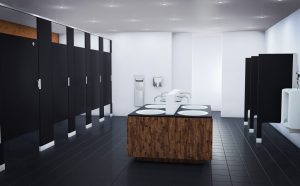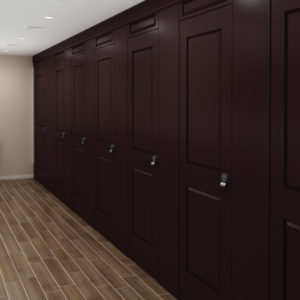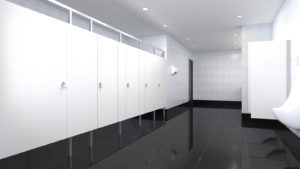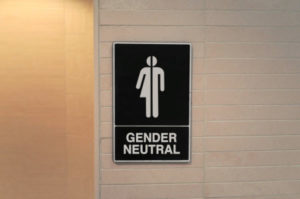LEED, or Leadership in Energy and Environmental Design, is an internationally recognized “green” building certification. LEED certification standards lead to a safer, greener, cleaner and more energy efficient environment within the building where they are applied. With a certification process more than 25 years in the making, LEED has grown to become the most widely used green building rating system in the world. As a process, it offers third-party verification that a building or community was designed and built using strategies aimed at reducing energy and water usage, promoting better indoor air quality, and improving quality of life.
Third Party Verification System
As an internationally recognized third-party verification system, LEED influences how buildings and communities are planned, constructed, maintained and operated. In order for a building project to earn LEED Certification, it must meet certain criteria and goals within the following categories:
Location and Transportation – how close a project is to mass transit
Materials and Resources – use of locally sourced, sustainable products
Water Efficiency – reducing potable water usage
Energy and Atmosphere – improving energy performance and indoor air quality
Sustainable Sites – utilizing nearby natural resources and ecosystems that can naturally take part of the design, minimizing environmental pollution
Regional Priority Credits – addressing a particular concern based on location
Innovation – any idea not covered under the main LEED areas
Each of these credit categories contains a varied series of suggested opportunities. The building project earns points when it properly uses and integrates these opportunities. The LEED certification is applicable to both residential and commercial construction, and projects can earn one of four certification levels: Certified, Silver, Gold or Platinum.
Image used with the permission of the U.S. Green Building Council, Inc. under its “Limited License” provision
Benefits Of LEED Certification
Any project, at any stage in development, can pursue LEED certification. Although LEED-certified projects typically have a higher initial investment because of stricter standards for construction, materials and labor, this initial investment can be recovered with lower operating costs. According to a study conducted by the New Building Institute, LEED buildings average a 24 percent decrease in energy consumption. In addition to reduced energy and water usage, LEED buildings also provide substantial reductions in costs associated with building maintenance, management of construction waste, and liability.
LEED-certified buildings also offer many other benefits. Typically built with occupant comfort in mind, these buildings offer increased sunlight, open spaces, and significantly better air quality, creating healthier, more comfortable, and very attractive places to live, work or play. For communities, having a LEED certified building not only reinforces the community’s commitment to sustainability, it also brings jobs to the community, since one of LEED’s best practices is utilizing local labor and materials wherever possible.
A Commitment to Sustainability
At Scranton Products, we believe in supporting a healthier environment and are focused on providing our customers innovative sustainable solutions that create a positive environmental impact.
Because our products are designed to meet specific LEED requirements, incorporating Scranton Products sustainable HDPE materials into your projects can contribute points toward LEED v4 certification in the following categories:
Material & Resources:
· Recycled Content
· REACH Optimization
· Construction Waste Diversion
For more information on our complete suite of sustainable products, please contact us to start a conversation today. All of our products are 100% recyclable and are made from recycled materials, incorporating between 30 and 85% recycled content, including both post-consumer and pre-consumer materials. In addition, our products are free of VOC emissions and are GREENGUARD Gold Certified.



 One of biggest and most costly issues that facility managers have to deal with is maintenance. Commercial facility restrooms usually require considerable maintenance, which leads to high costs and a significant amount of time and effort. Replacing partitions and meticulously scrubbing the floors and walls are no fun, so why not get ahead of the costly maintenance by using the right materials?
One of biggest and most costly issues that facility managers have to deal with is maintenance. Commercial facility restrooms usually require considerable maintenance, which leads to high costs and a significant amount of time and effort. Replacing partitions and meticulously scrubbing the floors and walls are no fun, so why not get ahead of the costly maintenance by using the right materials? Having a stylish bathroom will certainly appeal to the occupants in your facility, adding an extra dose of comfort where most people feel vulnerable. Aria Partitions™ offer a sleek appearance. Aria Partitions™ are customizable and can be tailored to fit any design pattern or layout. They offer seven unique panel designs, 17 door designs, as well as 27 different colors and textures. You get to choose your preferred style to go with the theme and aesthetics of your new stylish restroom.
Having a stylish bathroom will certainly appeal to the occupants in your facility, adding an extra dose of comfort where most people feel vulnerable. Aria Partitions™ offer a sleek appearance. Aria Partitions™ are customizable and can be tailored to fit any design pattern or layout. They offer seven unique panel designs, 17 door designs, as well as 27 different colors and textures. You get to choose your preferred style to go with the theme and aesthetics of your new stylish restroom. One of the best reasons to choose Aria Partitions™ for your restroom makeover is due to the low maintenance that these partitions require. Aria Partitions™ are made from HDPE (high-density polyethylene) solid plastic, which can withstand the humidity and moisture in your restroom. These two factors contribute heavily to the wear of standard partitions because they soak the inner paper core and sprout mold, which leads to foul odors and the possibility of negative health effects. Since HDPE is solid, there’s no paper core that’s susceptible to mold growth, meaning you don’t have to replace them.
One of the best reasons to choose Aria Partitions™ for your restroom makeover is due to the low maintenance that these partitions require. Aria Partitions™ are made from HDPE (high-density polyethylene) solid plastic, which can withstand the humidity and moisture in your restroom. These two factors contribute heavily to the wear of standard partitions because they soak the inner paper core and sprout mold, which leads to foul odors and the possibility of negative health effects. Since HDPE is solid, there’s no paper core that’s susceptible to mold growth, meaning you don’t have to replace them.

 Going for the single-occupant bathrooms can help make every occupant feel comfortable without making them choose a specific restroom to utilize, regardless of what gender they identify as. Single-occupant restrooms are a great mediation because it appeals to everybody and provides adequate comfort and privacy to every occupant throughout the day.
Going for the single-occupant bathrooms can help make every occupant feel comfortable without making them choose a specific restroom to utilize, regardless of what gender they identify as. Single-occupant restrooms are a great mediation because it appeals to everybody and provides adequate comfort and privacy to every occupant throughout the day.